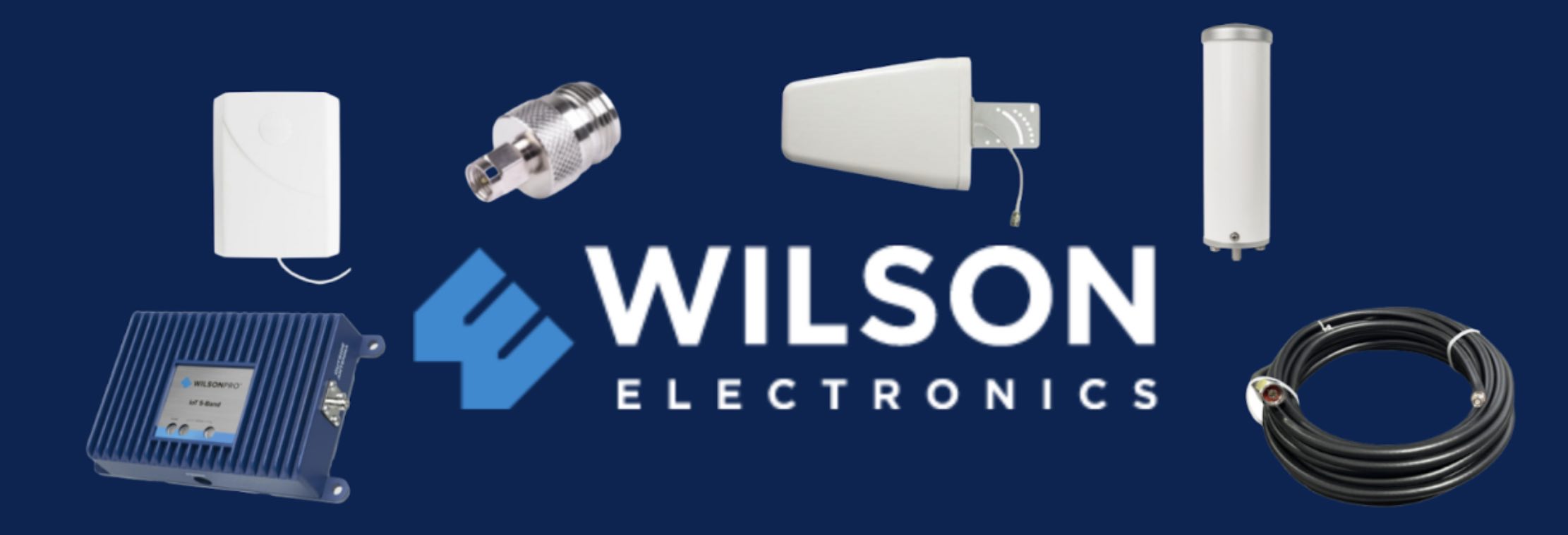


As a leader in signal-boosting technology, Wilson Electronics is a dominant force in the industry. Providing improved signals in weak signal environments, Wilson amplifiers and Wilson wireless solutions are known for their effectiveness and quality. Even when cell tower distances, challenging geography and building materials cause poor cellular signals, Wilson Electronics can help with one of their products. Read on to learn more about Wilson and to find answers to some of your most frequently asked questions.
Per Wilson/ weBoost support: Often times if the cartridge inside needs to be replaced you may notice a decrease in signal, but the cartridge will usually appear black in color or damaged. This is something they will replace for you if needed. You can reach out to them here through their online help center: http://support.weboost.com/hc/en-us/requests/new
You want to aim the antenna in the direction of your cell tower. Once you have it aimed in the correct direction, you want to gradually zone in on the best possible signal from that direction. Slowly wave the antenna by about 5 degree increments until you find a 'sweet spot.' If you're unsure of how to locate the tower in your location, you can reference https://www.antennasearch.com/ or https://www.cellreception.com/towers/
There's no set distance devices like this operate within. It is all relative to what's available right outside and at the cell tower. So, you should be getting whatever signal and speeds are available right outside where your external antenna is located (more signal of course depending on the gain of your antenna and signal loss incorporated by the cable) and if there's faster speeds at the cell tower, there�s potential for more speeds back to your cellular device.
This depends on several factors, including the signal strength where you'll be installing the antenna (the better that signal, the more loss you can get away with while still seeing an improvement in performance) and what type of cable you're using (different cable types have more loss than others). As a general rule, the shorter the cable, the better, unless a longer cable allows you to mount the antenna in a spot with significantly better signal (for example, it is often better to use a 30' cable and mount the antenna up high on the roof where signal is better than to use a 10' cable and mount it right outside your window, even though the 30' cable has more loss than the 10' cable). Also keep in mind that attenuation (signal loss) is also incurred by screwing cables together (one longer cable is better than daisy-chaining two shorter ones together) and from using adapters (for example, if you choose a cable that has a different connector type than your antenna and requires the use of an adapter, you will have a little additional loss from the adapter).
Every WilsonPro product includes a minimum 3-year warranty. If your product stops working within three years from the date of purchase, they ask you to contact their customer support team for help. They'll attempt to troubleshoot the issue first. If the product can't be fixed, they'll ask you to ship it to them for an exchange. You will be asked to cover the price of shipping the returned item.
Most Wilson Electronics antennas use a N/Female connector.
We have a list at Wilson Electronics End of Life Products.
It can be installed at the "top" of the setup (outside, between the antenna and the coax cable) or at the "bottom" (between the coax cable and the amplifier). Since the surge protector requires you to run a grounding wire into the ground, most users choose to install it at the "top" of their system. Either way, you will need a 2' "jumper" cable to connect the surge protector.
5Gstore customers may reach out to our support as needed at 833-547-8673 x3 or support@5gstore.com.